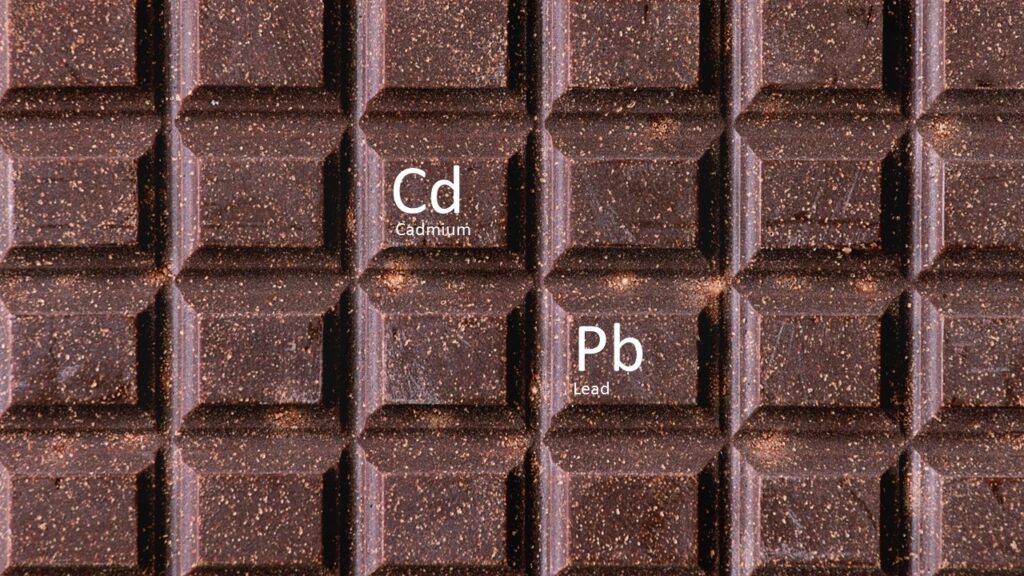The upcoming holiday season will undoubtedly boost chocolate consumption, whether it be white, milk or dark. As dark chocolate is often perceived as a healthier treat, many are unaware of the potential heavy metals it might harbor. Last year, Consumer Reports (CR) revealed that dark chocolate could contain cadmium and lead, metals known to cause health issues. This year, with a broader scope, CR offers a deeper dive into this matter and answers the question: are cadmium and lead in dark chocolate a serious concern?
While cacao is the heart and soul of chocolate, giving it its characteristic taste, it’s also where these heavy metals predominantly reside. With dark chocolate usually having a higher cacao content, it’s more susceptible. But notably, other chocolate variations, from milk chocolates with minimal cacao to the dense cocoa powder, aren’t exempted.
In its pursuit of clarity, CR tested 48 different products spanning seven categories, namely cocoa powder, chocolate chips, milk chocolate bars, dark chocolate bars, brownie mixes, chocolate cake mixes and hot chocolate. Brands ranged from the globally recognized like Hershey’s and Nestlé, to retailers like Costco and Walmart, and even specialized brands such as Droste and Navitas. The central theme? Cadmium and lead in dark chocolate.
Related: How the FDA’s Closer to Zero Action Plan Aims to Reduce Lead Levels in Baby Food
The results were somewhat expected. Dark chocolates had higher heavy metal content, particularly cadmium and lead. While milk chocolate showed lower levels, James E. Rogers, director and acting head of product safety testing at CR, pointed out that every product CR tested had detectable amounts of cadmium and lead. Though some products did cross CR’s threshold for concern regarding these heavy metals, safer alternatives in each category were also identified.
Heavy Metals and Their Dangers
Cadmium, lead and other heavy metals aren’t exclusive to chocolates. They’re omnipresent in other foods like rice, fish, spinach and even drinking water. The danger escalates with cumulative intake from multiple sources. Particularly concerning is chocolate’s popularity across age groups. Reducing its heavy metal content seems imperative.
Heavy metal exposure can inflict the most damage on children and during pregnancies. It can lead to developmental delays, behavioral problems and brain damage. Adults aren’t immune either; continuous exposure to lead can cause kidney damage, reproductive issues and more. The presence of lead in dark chocolate isn’t just an occasional risk; it’s a persisting concern, given that cocoa plants absorb cadmium from soil and lead can deposit on cocoa beans from external sources.
CR’s Testing Method
CR tested for cadmium, lead, mercury and arsenic in various chocolate products. Fortunately, none of the products indicated risks from arsenic or mercury.
The primary concern revolved around cadmium and lead in dark chocolate. For benchmarks, CR referred to California’s maximum allowable dose levels (MADL) for these metals, since no federal limits exist. It’s crucial to note that the tests were not about legal compliance but more about revealing products with relatively higher metal levels.
For dark chocolate enthusiasts, CR’s findings showed a mixed bag of results. Out of seven dark chocolate bars tested, five, or 71 percent, surpassed CR’s thresholds for cadmium, lead or both. Some safe bets were Divine 70 Percent Deliciously Smooth Dark Chocolate and Sam’s Choice Dark Chocolate 85 Percent Cocoa. Contrarily, bars like Nestlé’s Perugina Premium Dark Chocolate posed concerns. Nestlé’s response emphasized its compliance with regulatory requirements, including those for cadmium and lead.
While chocolate remains an indulgent treat, it’s crucial to be selective. The recurring theme of cadmium and lead in dark chocolate should encourage consumers to stay informed, choose wisely and enjoy in moderation.












Join or login to leave a comment
JOIN LOGIN